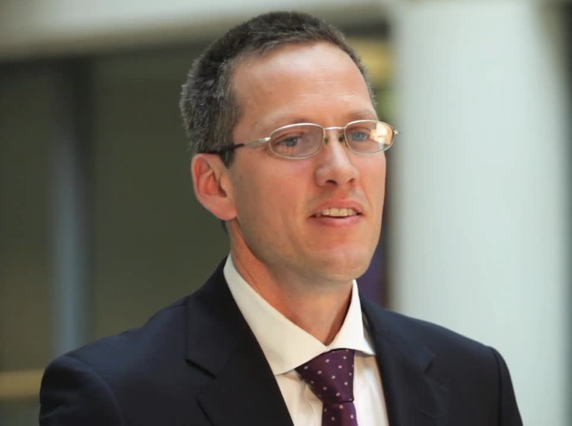Crime, Corruption, Tax Evasion Drained a Record US$991.2bn in Illicit Financial Flows from Developing Economies in 2012
| By Alicia Miguel | 0 Comentarios
A record US$991.2 billion in illicit capital flowed out of developing and emerging economies in 2012—facilitating crime, corruption, and tax evasion—according to the latest study released Tuesday by Global Financial Integrity (GFI), a Washington, DC-based research and advisory organization. The study is the first GFI analysis to include estimates of illicit financial flows for 2012.
The report—GFI’s 2014 annual global update on illicit financial flows—pegs cumulative illicit outflows from developing economies at US$6.6 trillion between 2003 and 2012, the latest year for which data is available. Titled “Illicit Financial Flows from Developing Countries: 2003-2012,” [PDF] the report finds that illicit outflows are growing at an inflation-adjusted 9.4 percent per year—roughly double global GDP growth over the same period.
“As this report demonstrates, illicit financial flows are the most damaging economic problem plaguing the world’s developing and emerging economies,” said GFI President Raymond Baker, a longtime authority on financial crime. “These outflows—already greater than the combined sum of all FDI and ODA flowing into these countries—are sapping roughly a trillion dollars per year from the world’s poor and middle-income economies.”
“Most troubling, however, is the fact that these outflows are growing at an alarming rate of 9.4 percent per year—twice as fast as global GDP,” continued Mr. Baker. “It is simply impossible to achieve sustainable global development unless world leaders agree to address this issue head-on. That’s why it is essential for the United Nations to include a specific target next year to halve all trade-related illicit flows by 2030 as part of post-2015 Sustainable Development Agenda.”
Findings
Authored by GFI Chief Economist Dev Kar and GFI Junior Economist Joseph Spanjers, the study reveals that illicit financial flows hit an historic high of US$991.2 billion in 2012—marking a dramatic increase from 2003, when illicit outflows totaled a mere US$297.4 billion. Over the span of the decade, the report finds that illicit financial flows are growing at an inflation-adjusted average rate of 9.4 percent per year. Still, in many parts of the world, the authors note that illicit flows are growing much faster—particularly in the Middle East and North Africa (MENA) and in Sub-Saharan Africa, where illicit flows are growing at an average annual inflation-adjusted rate of 24.2 and 13.2 percent, respectively.
Totaling US$6.6 trillion over the entire decade, illicit financial flows averaged a staggering 3.9 percent of the developing world’s GDP. As a share of its economy, Sub-Saharan Africa suffered the largest illicit financial outflows—averaging 5.5 percent of its GDP—followed by developing Europe (4.4 percent), Asia (3.7 percent), MENA (3.7 percent), and the Western Hemisphere (3.3 percent).
“It’s extremely troubling to note just how fast illicit flows are growing,” stated Dr. Kar, the principal author of the study. “Over the past decade, illicit outflows from developing countries increased by 9.4 percent each year in real terms, significantly outpacing economic growth. Moreover, these outflows are growing fastest in and taking the largest toll—as a share of GDP—on some of the poorest regions of the world. These findings underscore the urgency with which policymakers should address illicit financial flows”.
Trade Misinvoicing Dominant Channel
The fraudulent misinvoicing of trade transactions was revealed to be the largest component of illicit financial flows from developing countries, accounting for 77.8 percent of all illicit flows—highlighting that any effort to significantly curtail illicit financial flows must address trade misinvoicing.
The US$991.2 billion that flowed illicitly out of developing countries in 2012 was greater than the combined total of foreign direct investment (FDI) and net official development assistance (ODA), which these economies received that year. Illicit outflows were roughly 1.3 times the US$789.4 billion in total FDI, and they were 11.1 times the US$89.7 billion in ODA that these economies received in 2012.
“Illicit financial flows have major consequences for developing economies,” explained Mr. Spanjers, the report’s co-author. “Emerging and developing countries hemorrhaged a trillion dollars from their economies in 2012 that could have been invested in local businesses, healthcare, education, or infrastructure. This is a trillion dollars that could have contributed to inclusive economic growth, legitimate private-sector job creation, and sound public budgets. Without concrete action addressing illicit outflows, the drain on the developing world is only going to grow larger.”
Country Rankings
Dr. Kar and Mr. Spanjers’ research tracks the amount of illegal capital flowing out of 151 different developing and emerging countries over the 10-year period from 2003 through 2012, and it ranks the countries by the volume of illicit outflows. According to the report, the 25 biggest exporters of illicit financial flows over the decade are:
- China……… US$125.24bn average (US$1.25tr cumulative)
- Russia…………….. US$97.39bn avg. (US$973.86bn cum.)
- Mexico…………….. US$51.43bn avg. (US$514.26bn cum.)
- India……………….. US$43.96bn avg. (US$439.59bn cum.)
- Malaysia…………. US$39.49bn avg. (US$394.87bn cum.)
- Saudi Arabia……. US$30.86bn avg. (US$308.62bn cum.)
- Brazil……………… US$21.71bn avg. (US$217.10bn cum.)
- Indonesia……….. US$18.78bn avg. (US$187.84bn cum.)
- Thailand…………. US$17.17bn avg. (US$171.68bn cum.)
- Nigeria…………… US$15.75bn avg. (US$157.46bn cum.)
- A.E………………… US$13.53bn avg. (US$135.30bn cum.)
- South Africa……… US$12.21bn avg. (US$122.14bn cum.)
- Iraq…………………. US$11.14bn avg. (US$89.10bn cum.)
- Costa Rica………… US$9.40bn avg. (US$94.03bn cum.)
- Philippines……….. US$9.35bn avg. (US$93.49bn cum.)
- Belarus……………. US$8.45bn avg. (US$84.53bn cum.)
- Poland……………… US$5.31bn avg. (US$53.12bn cum.)
- Panama…………… US$4.85bn avg. (US$48.48bn cum.)
- Serbia……………… US$4.57bn avg. (US$45.66bn cum.)
- Chile……………….. US$4.56bn avg. (US$45.64bn cum.)
- Brunei…………….. US$4.30bn avg. (US$34.40bn cum.)
- Syria………………. US$3.77bn avg. (US$37.68bn cum.)
- Egypt……………… US$3.77bn avg. (US$37.68bn cum.)
- Paraguay………… US$3.70bn avg. (US$36.97bn cum.)
- Venezuela……….. US$3.68bn avg. (US$36.77bn cum.)
For a complete ranking of average annual illicit financial outflows by country, please refer to Appendix Table 2 of the report on page 28. The rankings can also be downloaded here.
GFI also found that the top exporters of illegal capital in 2012 were:
- China………………………… US$249.57bn
- Russia……………………….. US$122.86bn
- India…………………………… US$94.76bn
- Mexico……………………….. US$59.66bn
- Malaysia ………………….. US$48.93bn
- Saudi Arabia……………….. US$46.53bn
- Thailand…………………….. US$35.56bn
- Brazil…………………………. US$33.93bn
- South Africa………………… US$29.13bn
- Costa Rica…………………… US$21.55bn
- Indonesia……………………. US$20.82bn
- A.E…………………………… US$19.40bn
- Iraq…………………………… US$14.65bn
- Belarus…………………….. US$13.90bn
- Philippines…………………. US$9.16bn
- Syria…………………………… US$8.64bn
- Nigeria……………………….. US$7.92bn
- Trinidad & Tobago…………. US$7.41bn
- Vietnam……………………… US$6.93bn
- Lithuania………………….. US$6.45bn
- Libya…………………………. US$5.40bn
- Panama……………………. US$5.34bn
- Aruba………………………. US$5.29bn
- Egypt………………………. US$5.09bn
- Chile……………………….. US$5.08bn
An alphabetical listing of illicit financial outflows is available by year for each country in Appendix Table 3 on pg. 30 of the report, or it can be downloaded here.
Policy Recommendations
The report recommends that world leaders focus on curbing the opacity in the global financial system, which facilitates these outflows. Specifically, GFI maintains that:
- Governments should establish public registries of meaningful beneficial ownership information on all legal entities;
- Financial regulators should require that all banks in their country know the true beneficial owner(s) of any account opened in their financial institution;
- Government authorities should adopt and fully implement all of the Financial Action Task Force’s (FATF) anti-money laundering recommendations;
- Regulators and law enforcement authorities should ensure that all of the anti-money laundering regulations, which are already on the books, are strongly enforced;
- Policymakers should require multinational companies to publicly disclose their revenues, profits, losses, sales, taxes paid, subsidiaries, and staff levels on a country-by-country basis;
- All countries should actively participate in the worldwide movement towards the automatic exchange of tax information as endorsed by the OECD and the G20;
- Trade transactions involving tax haven jurisdictions should be treated with the highest level of scrutiny by customs, tax, and law enforcement officials;
- Governments should significantly boost their customs enforcement, by equipping and training officers to better detect intentional misinvoicing of trade transactions; and
- The United Nations should adopt a clear and concise Sustainable Development Goal (SDG) to halve trade-related illicit financial flows by 2030and similar language should be included in the outcome document of the Financing for Development Conference in July 2015.






